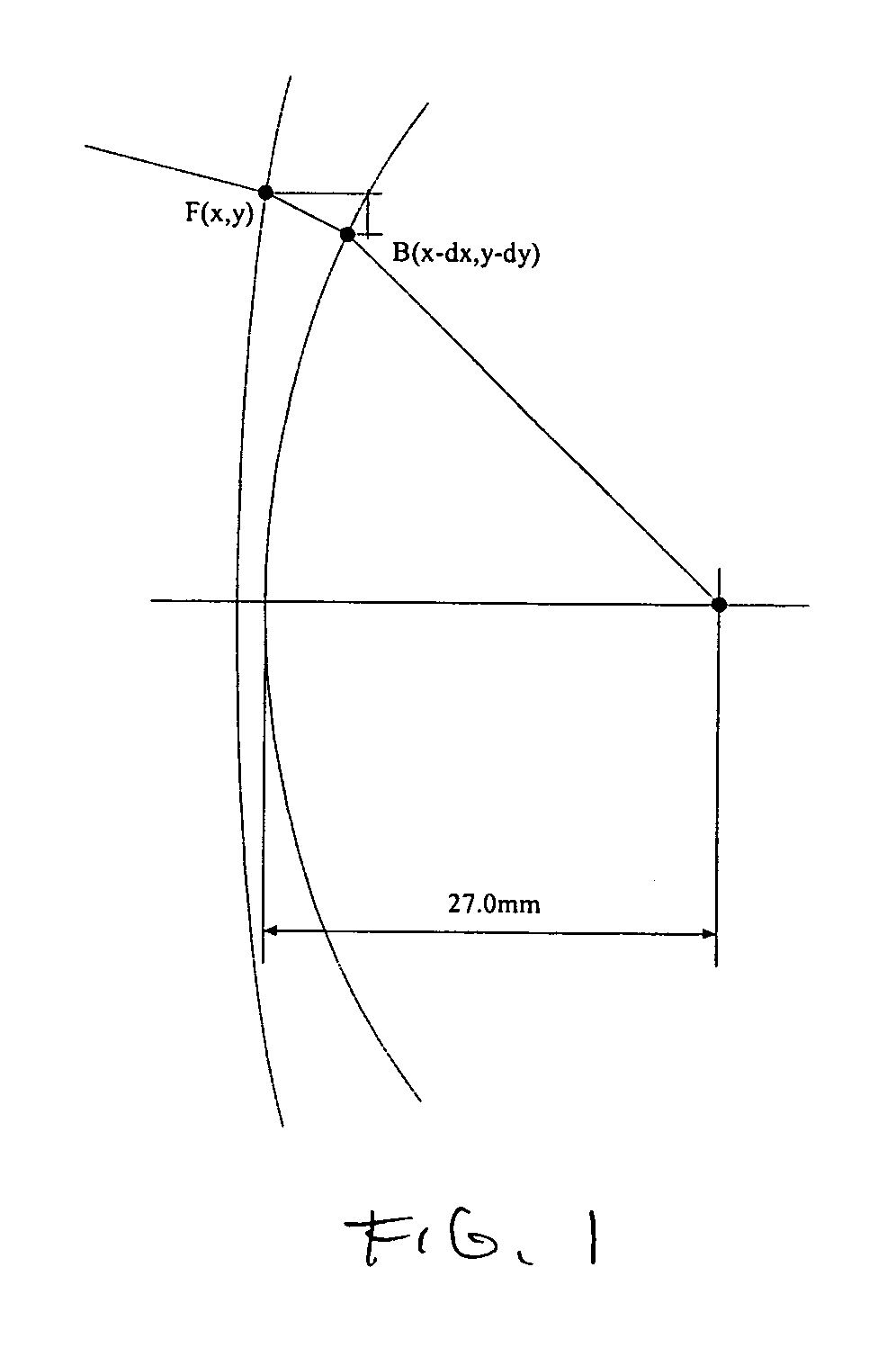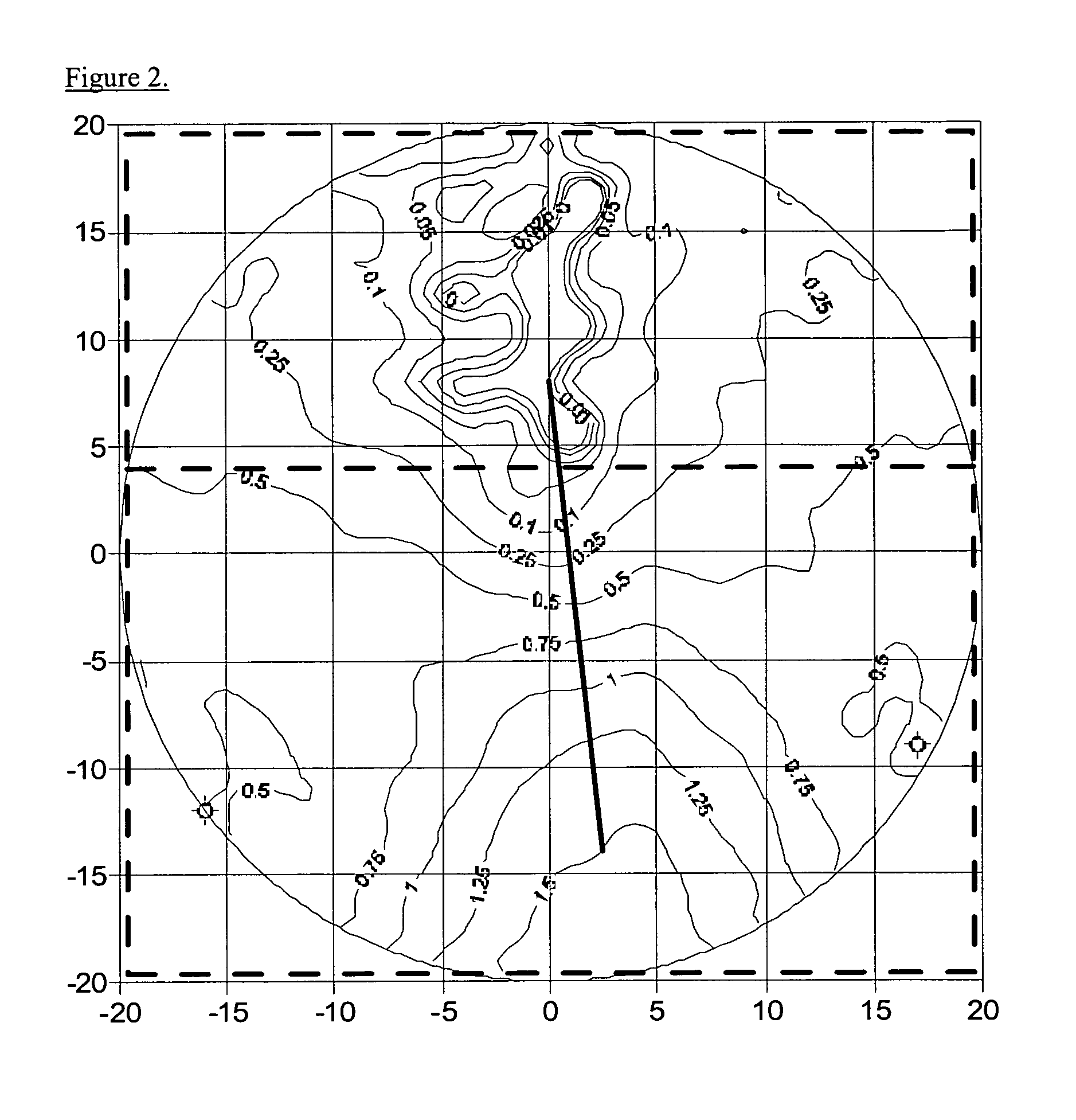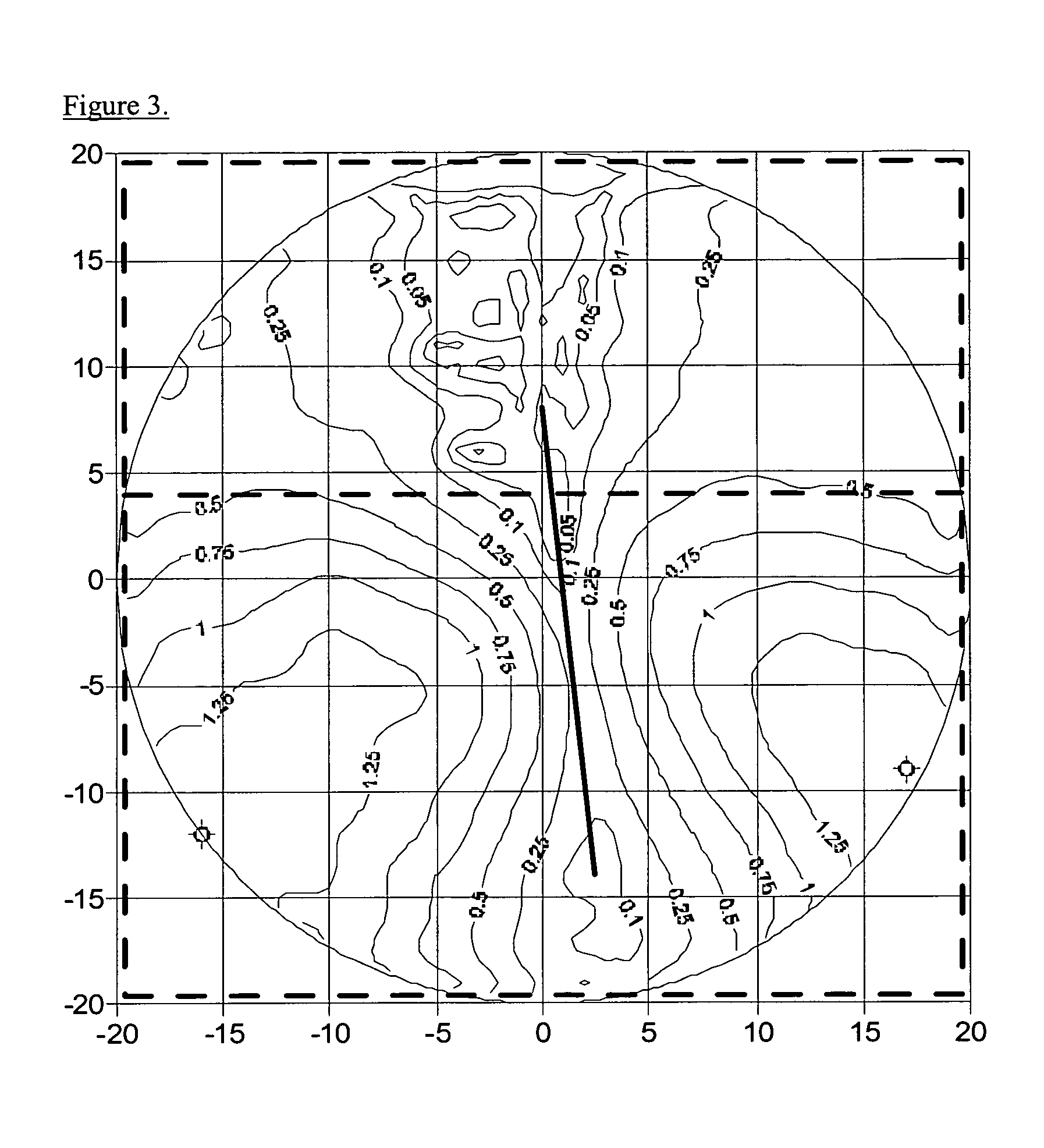Methods for designing composite ophthalmic lens surfaces
a technology of composite ophthalmic lenses and lenses, applied in the field of ophthalmic lenses, can solve the problem that the composite surface does not have the desired surface power profil
- Summary
- Abstract
- Description
- Claims
- Application Information
AI Technical Summary
Problems solved by technology
Method used
Image
Examples
example
[0047]A Varilux COMFORT™ lens with a 2.0 diopters base power and a 1.5 diopters add power was measured using a coordinate measuring machine. The power and unwanted cylinder profiles are shown as FIGS. 2 and 3. A Varilux PANAMIC™ lens with a 5.5 diopters base power and a 1.5 diopters add power was measured and the power and unwanted cylinder profiles are shown in FIGS. 4 and 5.
[0048]A composite surface was to be created with a base power of 6.0 diopters and a target add power of 3.0 diopters. The surface was first created by sag addition of the measured COMFORT and PANAMIC surfaces. The surface had an add power of 2.89 diopters. The power and unwanted cylinder profiles for this surface are shown as FIGS. 6 and 7, respectively. The surface was then created using the curvature addition method of the invention. The resulting lens had an add power of 3.0 diopters. The power and unwanted cylinder profiles for this surface are shown as FIGS. 8 and 9.
PUM
 Login to View More
Login to View More Abstract
Description
Claims
Application Information
 Login to View More
Login to View More - R&D
- Intellectual Property
- Life Sciences
- Materials
- Tech Scout
- Unparalleled Data Quality
- Higher Quality Content
- 60% Fewer Hallucinations
Browse by: Latest US Patents, China's latest patents, Technical Efficacy Thesaurus, Application Domain, Technology Topic, Popular Technical Reports.
© 2025 PatSnap. All rights reserved.Legal|Privacy policy|Modern Slavery Act Transparency Statement|Sitemap|About US| Contact US: help@patsnap.com



